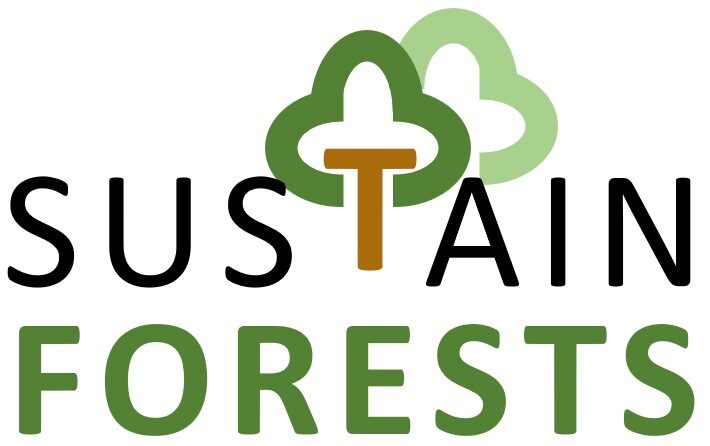Theoretically, the focus on forest patches (Box 1) closes a gap in land system science (LSS) and provides a relevant innovation to understand land system change better. LSS has a particularly strong focus on the forest-related land-use-change processes of agricultural expansion, intensification, and forest transitions (Meyfroidt et al. 2018). However, the persistence of forest patches cannot be explained very well by these theories. Theories of agricultural expansion might explain agriculture-induced deforestation, but why do some forest patches persist in a regional context of agricultural expansion? In other words, forest patching, the persistence and potential emergence/regrowth of forest patches, might be one important but underexplained process of land system change. Therefore, one innovation of SUSTAINFOREST for the field of LSS is to scrutinise the precise drivers, dynamics, and impacts of forest patching.
| Box 1: Definition of key terms − SUSTAINFORESTS focusses on forest patches outside protected areas and defines a forest patch in agricultural landscapes as an area of forest that has remained stable over the last 20 years. The FAO (2018) defines forest as a land larger than 0.5 hectares with trees higher than 5 metres and a canopy cover of more than 10 percent, and without agriculture and human settlements. In West Africa, farms are fallowed for 3 to 10 years (FAO 2016), sometimes much longer. Molinario et al. (2017) report that it takes about 18 years for all plots in an agricultural landscape in Democratic Republic of Congo to undergo a complete rotation cycle. This means that a forest patch is likely to be 18 years or older. − A landscape is an area “in which entities, including humans, interact according to rules (physical, biological, and social) that determine their relationships” and can vary in extent depending on objectives (Sayer et al. 2013:8530). − A landscape approach means focussing on how to balance competing demands on land in ways that ensure environmental values while maintaining or improving human wellbeing. A landscape approach also encompasses scale – analysing land use at landscape scale rather than at plot scale. − Direct drivers refer to human activities or biophysical factors that directly affect agricultural landscapes and forest patches. − Governance refers to “the (‘formal and informal, vertical and horizontal’) processes of interaction and decision-making among the actors involved in a collective problem that lead to the creation, reinforcement, or reproduction of social norms and institutions.” (Hufty et al. 2011:405). − Institutions are the “rules and norms (expected patterns of behaviour) held in common by social actors that guide, constrain and shape human interaction”(Hurlbert et al. 2019:736). Institutions can be formal rules (constitutions, laws, regulations, property rights) or informal constraints (“sanctions, taboos, customs, traditions, and codes of conduct”), and occur at multi-levels (local, regional, state and transnational)(North 1992:97) − A stakeholder is a “person, organisation or group with an interest or an influence” on forest patches “or who is influenced directly or indirectly by related activities and management decisions” (Newton and Elliott 2016:2). SUSTAINFORESTS also uses the term stakeholders to include actors. − Sustainable Land Management (SLM) refers to the use of land resources, including soils, water, animals and plants, for the production of goods to meet changing human needs, while ensuring the long-term productive potential of these resources and their environmental functions (Liniger et al. 2011). |
